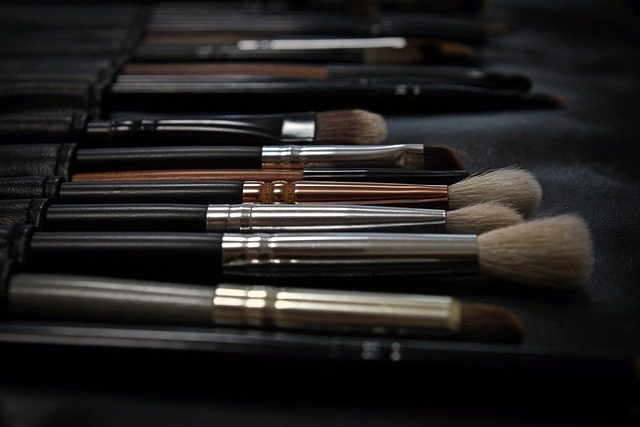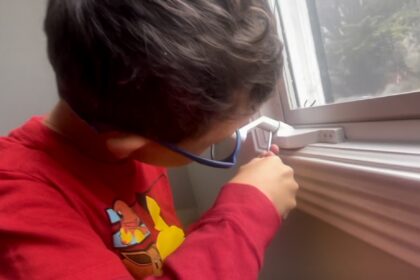While it may not be the most glamorous aspect of your beauty routine, learning how to clean makeup brushes is crucial. Keeping your brushes and sponges clean is not only important for hygiene and preventing bacteria and germs, but also for achieving optimal performance. When spending money on high-quality makeup brushes, it’s essential to know how to properly clean and maintain them to preserve their quality.
Makeup brushes can quickly become caked with product residue, dirt, and oil, creating a perfect environment for bacteria to thrive. This not only leads to dirty brushes but can also harm your skin—gross! That’s why it’s important to understand how to properly clean your makeup brushes, how frequently they should be cleaned, and when it’s necessary to replace them altogether.
To ensure they are free of bacteria, dust, and dirt, it is necessary to wash them thoroughly every week. Not only is this a hygienic habit, but it also contributes to a better application process.
What is the recommended frequency for Cleaning Makeup Brushes?
The frequency at which you should clean your makeup brushes varies depending on the type of makeup products you use. While washing your brushes can feel like a tedious task, try to make it an enjoyable experience. It is recommended to wash your brushes at least once a week, but more frequent washings may be necessary if you frequently switch up your colours for optimal application and true colour payoff.
If you use a brush to apply wet products or makeup with liquid components, such as concealer and foundation, it is important to clean it regularly. Aim for at least once a week to ensure the product buildup is removed. This will also improve the effectiveness and efficiency of your brush application.
To maintain good hygiene and prevent infections, it is recommended to clean your eye brushes every two weeks. This applies to brushes used for dry makeup products such as eyeshadow and eyeliner. Since the eyes are more vulnerable to infections than the skin, it is important to keep your brushes sanitized. This not only helps them work effectively but also prevents bacterial build-up that can lead to acne breakouts.
Cleaning makeup brushes the right way
Certain professionals prefer using traditional liquid cleansers, while others opt for bar soap alternatives. To use bar soap, pour some cleanser onto a small dish and wet your brush with warm water, being careful to only wash the top part that touches makeup and skin. Dip the brush into the soap to dilute it slightly, then rub it back and forth in your palm to create a foamy lather. Rinse thoroughly with lukewarm water until all traces of soap are removed.
You can use cleansing tools to remove any buildup of products on your brushes. These tools not only effectively clean the brush but also protect your hands from becoming dry and irritated. Simply swirl the brush on a cleaning mat or glove to dislodge old products, then rinse the brush thoroughly.
You can check for any remaining product in the center of the bristles by feeling their temperature; if it is still warm, rinse and repeat until all residue is gone.
Another method for cleaning brushes is rinsing. Start by holding the brush under lukewarm running water, concentrating on only rinsing the tips of the bristles. This will effectively remove any leftover makeup residue.
Be careful not to get water on the entire brush head, as the warm water can cause the glue that holds the handle and bristles together to dissolve. For a deeper clean, you can use a clarifying or gentle shampoo. Mix a tablespoon of either shampoo with some lukewarm water in a bowl, then gently swirl the brush around in the mixture. Avoid using soap, as it can dry out the brush’s bristles.
Create a lather by mixing shampoo and water, then gently swirl the tips of your brushes in the mixture. Alternatively, massage the brush tips in the palm of your hand for extra lather. Rinse the tips of your brushes with running water a second time to ensure they are clean.
To ensure your brushes are thoroughly cleaned, continue to lather and rinse them until the water running off the bristles is clear. This means there is no more makeup residue left. Once you’ve confirmed they are clean, use dry paper towels to squeeze out any excess water from the bristles gently.
This is an ideal solution for someone who has little time to spare or many brushes to deal with.
How to Dry Makeup Brushes?
It’s equally important to let brushes dry before you use them for your next makeup session. After squeezing excess water, lay your brushes flat on a dry towel. It’s important to have the tips of the brushes hang on the edge instead of standing upright. This prevents water from flowing down the bristles and potentially loosening the glue that holds them together.
After rinsing the brush, shake off any excess water and lightly pat the bristles with a clean towel to remove as much moisture as possible. Then, fold up one end of the towel and place the handle of the brush on top, ensuring that the head of the brush is angled downward. It’s important to keep water away from the handle to prevent any potential damage to the bristles or the handle itself.
Allowing makeup brushes to dry can take up to a full day. Alternatively, you can simply leave them overnight to air dry.
If you observe signs of wear or loss of shape in your brushes, it may be time to replace them. Using them inefficiently might not be worth it in the long run.








